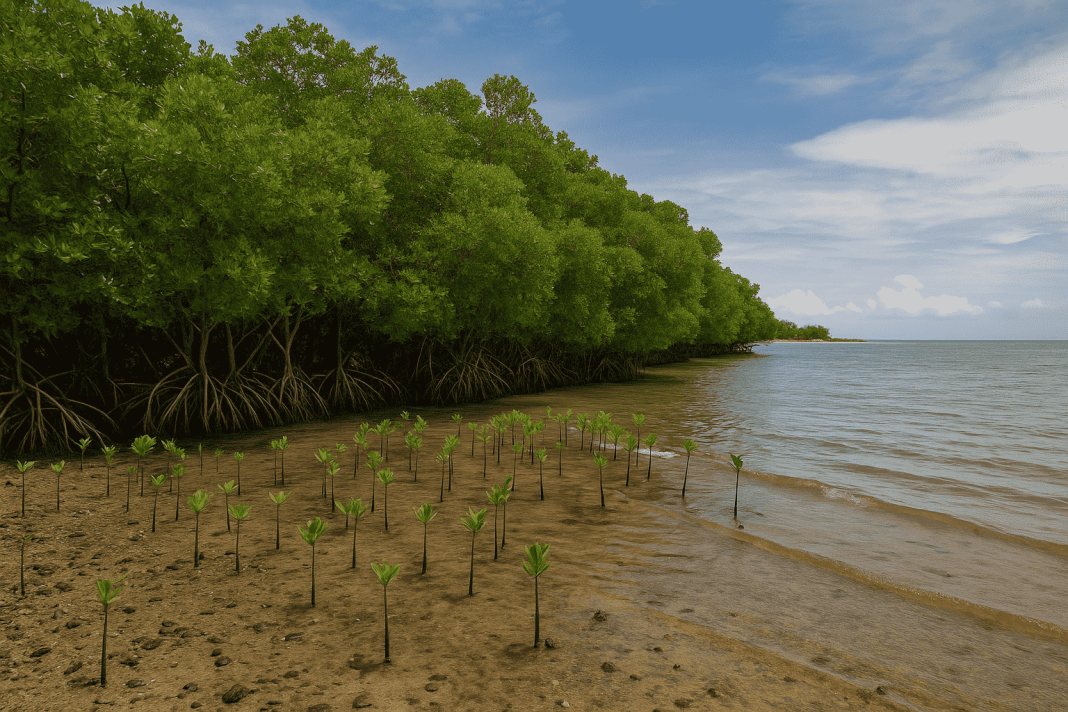Madagascar’s new climate resilience plan marks a major step in global efforts to protect vulnerable coastal regions. With rising sea levels and extreme weather events threatening lives and livelihoods, this $7 million initiative highlights how nations can act boldly by blending sustainability, innovation, and local empowerment.
Resilience Plan in Madagascar : A Coastal Breakthrough
The climate resilience plan in Madagascar is backed by the Global Environment Facility and targets four coastal regions Boeny, Menabe, Diana, and Atsimo Atsinanana. The project will benefit nearly 100,000 people by restoring fragile ecosystems and enhancing community livelihoods.
Key actions include:
-
Restoring 3,000 hectares of mangroves and coastal forests
-
Rehabilitating 2,000 hectares of degraded watersheds using community-led methods
These nature based approaches form the backbone of the resilience plan, reducing coastal vulnerability while restoring biodiversity.
Explore UNEP’s Nature-Based Solutions to learn more about global strategies.
Climate Resilience Plan Empowers Local Businesses
At the heart of Madagascar’s climate resilience plan is economic empowerment. The initiative supports 20 new ecosystem-based businesses in:
-
Sustainable fisheries
-
Aquaculture
-
Rainfed agriculture
-
Beekeeping
-
Ecotourism
Training and equipment will be provided, especially targeting women and youth. These ventures promote climate resilience while addressing food security and poverty reduction.
For example, mangroves not only absorb carbon but also shield coastlines from erosion—demonstrating the synergy between environment and economy.
Learn how mangroves combat climate change
India’s Resilience Plan in Infrastructure
India is another nation advancing a strong climate resilience plan. Its new infrastructure projects are designed to withstand extreme weather while connecting isolated communities. Elevated roads in flood-prone coastal zones now ensure access even during storms.
This dual-purpose strategy not only saves lives but also boosts local economies by securing trade routes and mobility.
For more on India’s efforts, visit the Ministry of Road Transport and Highways.
Australia’s Climate Resilience Plan Through Sustainable Mining
Australia has adopted a resource based resilience plan by investing in sustainable graphite mining through Evion. With graphite playing a crucial role in batteries for solar and electric vehicles, this project supports the green energy transition.
Sustainable mining practices, guided by EU advisors, ensure minimal environmental impact while contributing to economic development.
This approach shows how industrial innovation can align with environmental goals, setting a benchmark for private-sector participation in climate solutions.
Why a Climate Resilience Plan Matters Globally
A strong resilience plan is essential in the face of rising seas, frequent storms, and eroding coastlines. Vulnerable countries like Madagascar are showing that restoring natural defenses can go hand in hand with socioeconomic development.
Nature-based solutions like mangrove reforestation not only protect coasts but also support marine life and capture carbon an ideal intersection of climate action and biodiversity preservation.
Challenges in Scaling a Climate Resilience Plan
Despite its promise, scaling any climate resilience plan requires overcoming key challenges:
-
Funding: Madagascar’s $7 million initiative is supported by an additional $27 million in co-financing.
-
Coordination: Local, national, and international stakeholders must collaborate closely.
-
Community engagement: Long-term success hinges on local ownership and sustained participation.
Madagascar’s project offers a case study in balancing environmental, social, and economic priorities through coordinated action.
International Support for Madagascar’s Climate Resilience Plan
Global organizations play a key role in executing the climate resilience plan. The UN Environment Programme (UNEP) offers technical guidance, while the African Development Bank provides critical financing.
A notable $9.4 million conservation project in Madagascar has already:
-
Sequestered 10 million tonnes of CO₂
-
Created 1,500 green jobs
-
Protected several national parks
These investments underscore how global collaboration accelerates meaningful local impact.
Community Benefits of a Resilience Plan
Madagascar’s resilience plan improves more than the environment:
-
24,000 farmers will receive training on efficient irrigation
-
Women-led agricultural cooperatives will access productivity kits
-
Local jobs in aquaculture and ecotourism are expanding
Similarly, in India and Australia, resilient infrastructure and sustainable industries improve access to markets, create jobs, and build local pride and prosperity.
A Global Movement: The Future of Climate Resilience Plans
The global push for comprehensive resilience plans is gathering pace. From Africa to Asia and Australia, countries are crafting tailored strategies to protect ecosystems, strengthen communities, and drive sustainable development.
Madagascar’s bold approach inspires a worldwide blueprint. By embracing ecosystem-based adaptation, empowering local enterprises, and fostering international support, the world can build a safer, greener future for all.



